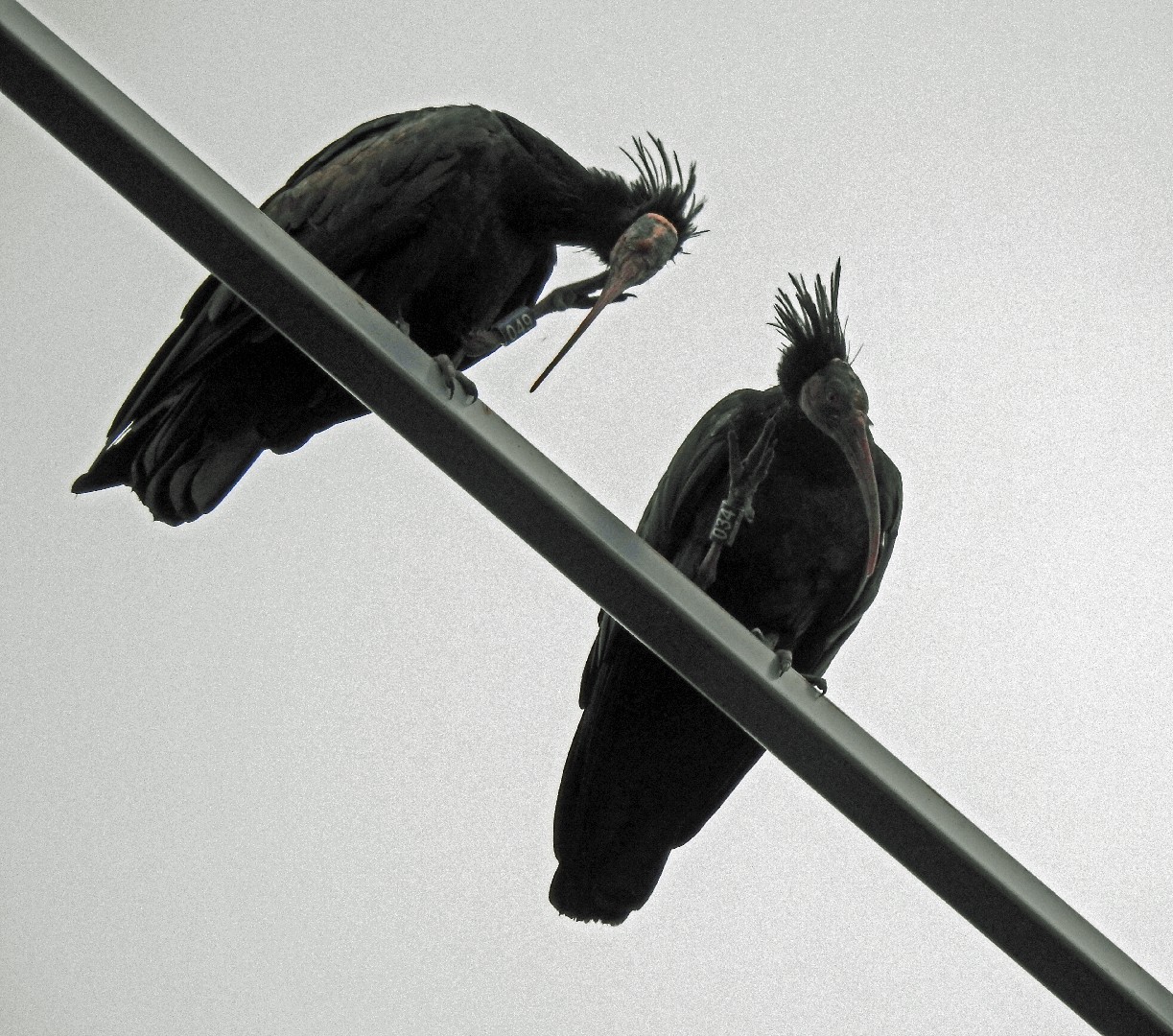 Where does the northern Bald Ibis live?
Where does the northern Bald Ibis live?
Where does the northern Bald Ibis live?
Unlike many other ibises, which nest in trees and feed in wetlands, the northern bald ibis breeds on undisturbed cliff ledges, and forages for food in irregularly cultivated, grazed dry areas such as semi-arid steppes, and fallow fields. The close proximity of adequate steppe feeding areas to breeding cliffs is an important habitat requirement. The northern bald ibis was once widespread across the Middle East, northern Africa, and southern and central Europe; fossil bones have been found at Solothurn dated to the Mesolithic and Neolithic Periods. It bred along the Danube and Rhone Rivers, and in the mountains of Spain, Italy, Germany, Austria and Switzerland (Gesner's original description was of a Swiss bird), and most probably also in the Upper Adriatic region. It used castle battlements as well as cliff ledges for nesting before vanishing from Europe at least three centuries ago. It is also extinct over most of its former range, and now almost the entirety of the wild breeding population of just over 500 birds is in Morocco, at Souss-Massa National Park, where there are three documented colonies, and near the mouth of the Oued Tamri (north of Agadir), where there is a single colony containing almost half the Moroccan breeding population. There is some movement of birds between these two sites. Religious traditions helped this species to survive in one Turkish colony long after the species had disappeared from Europe, since it was believed that the ibis migrated each year to guide Hajj pilgrims to Mecca. The ibis was protected by its religious significance, and a festival was held annually to celebrate its return north. The Turkish ibis population was centred near the small town of Birecik in the southeast of the country, and during the first half of the 20th century, the Birecik colony maintained a relatively stable population of about 500 breeding pairs, reaching an estimated total population of about 3,000 around 1930. By the 1970s, numbers had drastically declined and a captive breeding program was initiated in 1977 with one adult pair and nine chicks taken from the wild. This program largely failed to revert the decline; there were 400 birds in 1982, five pairs in 1986, and seven pairs in 1987. Only three birds returned from their wintering grounds in 1989, and just one in 1990. The returning birds died before they could reproduce, thus rendering the species extinct in the wild in Turkey as of 1992. Once the wild Turkish population became non-viable, the colony was maintained as a flock which was free-flying for most of the year but caged in autumn to prevent migration. After the demise of the migratory Turkish colony, the northern bald ibis was known to survive in the wild only at the Moroccan sites, although occasional sightings of birds in Yemen, Eritrea, Saudi Arabia, and Israel during the 1980s and 1990s suggested that there was still a colony somewhere in the Middle East. Intensive field surveys in spring 2002, based on the knowledge of Bedouin nomads and local hunters, revealed that the species had never become completely extinct on the Syrian desert steppes. Following systematic searches, 15 old nesting sites were found, one, near Palmyra, was still hosting an active breeding colony of seven individuals. Although the ibis had been declared extinct in Syria more than 70 years earlier, the bird appears to have been relatively common in the desert areas until 20 years ago, when a combination of overexploitation of its range lands and increasing hunting pressures initiated a dramatic decline. The Moroccan breeding birds are resident, dispersing along the coast after the nesting season. It has been suggested that coastal fog provides extra moisture for this population, and enables the ibises to remain year-round. In the rest of its former range, away from the Moroccan coastal locations, the northern bald ibis migrated south for the winter, and formerly occurred as a vagrant to Spain, Iraq, Egypt, the Azores, and Cape Verde. Satellite tagging of 13 Syrian birds in 2006 showed that the three adults in the group, plus a fourth untagged adult, wintered together from February to July in the highlands of Ethiopia, where the species had not been recorded for nearly 30 years. They travelled south on the eastern side of the Red Sea via Saudi Arabia and Yemen, and returned north through Sudan and Eritrea.
People often ask
Related Searches
Scientific Classification
Phylum
Chordates Class
Birds Order
Pelicans and Relatives Family
Ibises and spoonbills Genus
Bald ibises Species
Northern Bald Ibis 